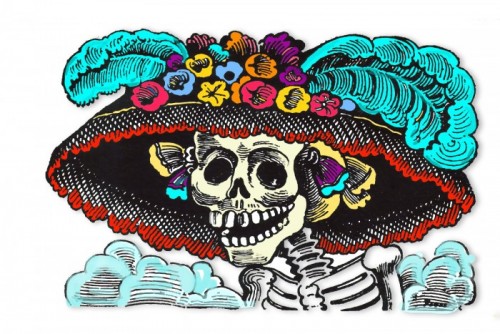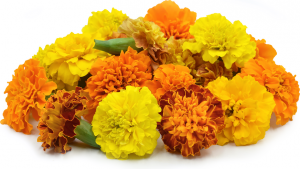
Michelle Barbero, Staff Writer |
Members of the SUNY Oneonta community were given the opportunity to celebrate and learn about The Day of the Dead, which is often glamorized in various societies with little knowledge of the cultural significance of the event. On November 2, students met in Grant Hall for a program that featured Alejandra Escudero, a Spanish Professor at SUNY Oneonta, who shared her knowledge and personal experiences regarding this sacred day.
Dia de los Muertos, or Day of the Dead, started in Mexico about 3,000 years ago by the Aztecs and was celebrated in either July or August. When the Spanish colonized Mexico, the celebration was moved to November. The popular image of La Catrina, a skeleton dressed up in colorful clothing, often comes to mind when one thinks of The Day of the Dead. This icon developed from the conditions of colonization, as the colonizers imposed a standard of how to dress upon the natives.
However, this tradition is not supposed to be a sad event.
“This day is about celebrating a new life,” explained Escudero.
The Day of the Dead is a time to remember the lives of loved ones who left this world. A main component of this tradition is the creation of an altar to honor the deceased.
Grant Hall housed an altar that reflected what a traditional altar would look like. Every aspect of the altar serves a purpose. The altar at this program was beautifully adorned with pictures of loved ones and famous Spanish singers. When this practice first began, people would put actual skulls of their departed loved ones on the altar.
The altar at this event had sugar skulls.

According to Mexican Sugar Skull, “Sugar skulls represent a departed soul, have the name written on the forehead, and are placed on the home ofrenda or gravestone to honor the return of a particular spirit.”
On the wall behind the altar, colorful paper and a cross was hung up. The colorful paper served as an invitation for the departed ones. The cross was brought into the tradition through the influence of Christian colonizers. A traditional altar is often illuminated with candles, but candles could not be present at this altar due to fire hazard regulations in the residence halls.
Marigold flowers, also known as cempasuchil, are the flowers that are usually used on these altars.
Escudero shared that “marigolds are believed to have 400 lives, and their aroma is supposed to invite the dead.”

In addition, pan de muerto, or bread of the dead, is also present at the altar. This sweet bread originated in Mexico, and the dough is often molded into a circular shape representing the start and end of life. The bread is sometimes decorated with bone-shaped pieces.
There are several foods that are staples of this celebratory period. For example, mole is often eaten at this time; it is a dark, elaborately made sauce that consists of a variety of ingredients including chili peppers and spices such as cumin and cinnamon. Mole sauce is commonly served with meat.
At the program, students had the chance to honor their departed loved ones and decorate models of La Catrina. Today, the Day of the Dead is celebrated around the world by a variety of cultures.
Leave a Reply